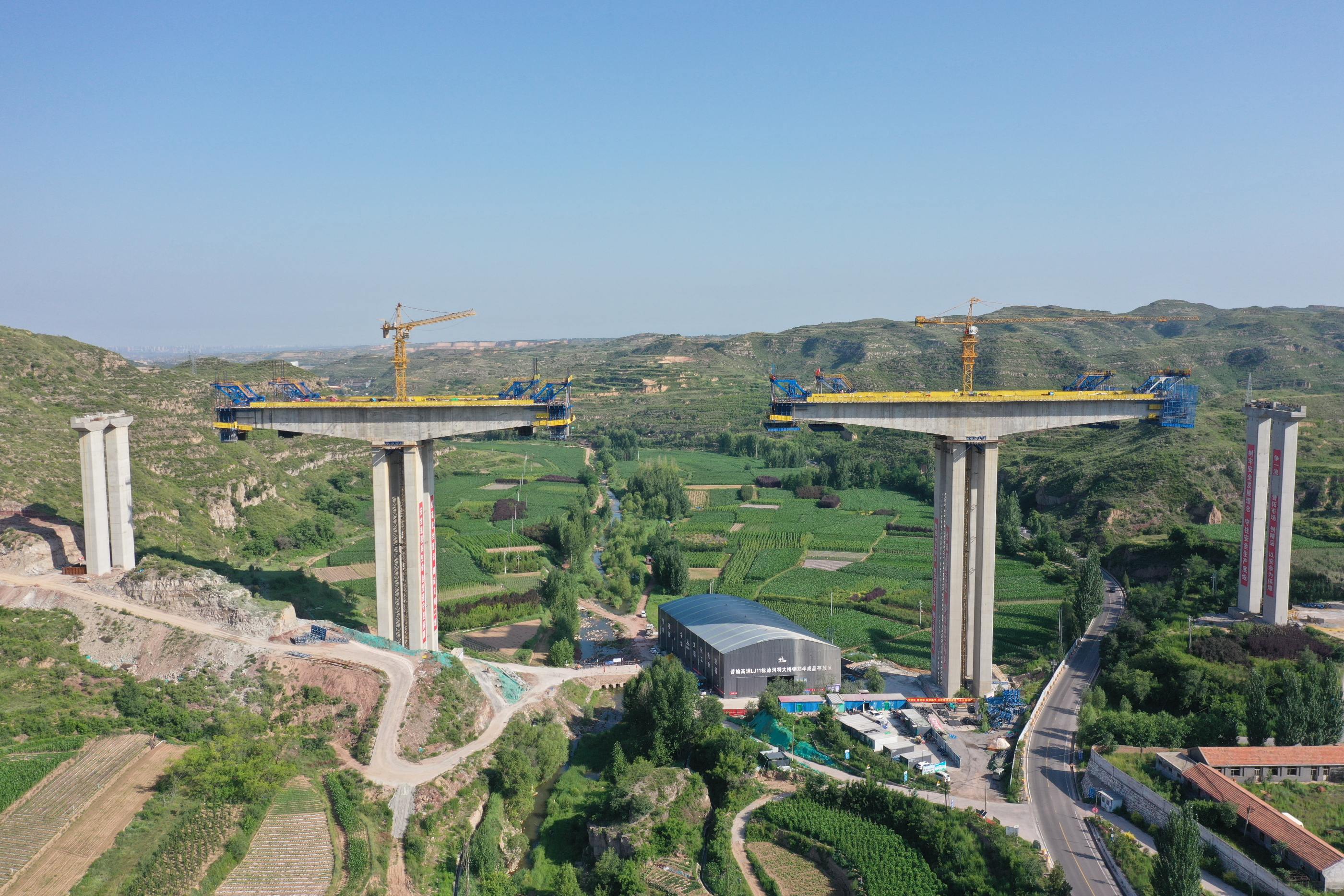A continuous rigid frame bridge is a bridge type that lies between a continuous beam bridge and a T-shaped rigid frame bridge. This type of bridge is also known as a continuous beam bridge with pier-beam consolidation. The construction of the closure section is a crucial step in the cantilever casting technique. This article explains the precautions for the closure section in cantilever construction.

One week before the pouring of the closure section, conduct a joint survey of the bridge elevation, axis, and bridge length, and observe the temperature data of this week. Find out the temperature change pattern, determine the the lowest temperature on a day, the constant temperature time, and the temperature rise time, so as to pour the concrete during the time with low temperature and small temperature variation. The pouring of the concrete in the closure section should be completed within the time with lower temperature and smaller temperature difference as specified by the supervisor and the design institute. After the concrete pouring is completed, the temperature starts to rise.
In order to keep the structural system stable during the pouring of the concrete in the closure section, after the rigid support is locked, apply a counterweight to the cantilever end in advance to control the height difference between the two ends of the closure within the allowable range of the specification. The counterweight at each end is equivalent to half of the weight of the concrete in the closure section. When pouring the concrete, unload the weight of the corresponding counterweight in each stage, move it to the No. 0 segment, and then unload it under the bridge.
The mix proportion test of the concrete for the closure section should be specially designed. After the concrete pouring is completed, cover and cure it after final setting. After reaching the tension strength, carry out the tensioning of the bottom steel tendons, remove the temporary rigid joint, and complete the full - bridge closure.
Alignment control means that during the cantilever casting construction stage, according to the calculation of the box - girder structure and the result of the hanging basket pressure test, provide the final deflection change value of each section of the beam body, and set the construction camber. Alignment control is very important in the cantilever construction of a bridge. Only when the camber is set reasonably can the two cantilever ends to be closed within one span be on the same horizontal line. Only in this way can the superstructure of the bridge reach the expected elevation alignment after experiencing upward or downward deflections repeatedly during the construction and operation states.
During the construction of the main pier, embed observation points on the pier body. During the cantilever casting construction of the main bridge box - girder, strengthen the observation work of the pier columns. Assign special personnel to regularly conduct stress detection on the most unfavorable section of the main pier using high - precision observation instruments. At the same time, detect the displacement change of the pier top of the main pier, and pay close attention to the deformation of the pier body to prevent accidents caused by uneven construction loads of the two cantilever casting segments of the bridge deck.
When pouring the cap, embed 4 steel bars at the four corners as observation points. During the cantilever casting construction, regularly observe the four points. The difference between the previous and the subsequent observations is the settlement value of the cap.
Use the central control point of the No. 0 block and the control points on the side piers to control the mid - line of each cantilever casting segment. After each cantilever casting segment is completed, review the displacement of the central points of the previous few segments. After the review is correct, release the mid - line of the segment to be poured, and closely monitor the mid - line change in each stage.
Use the leveling point at the center of the No. 0 block to control the elevation of the concrete and formwork of the cantilever casting segments. Before the concrete pouring, set elevation control steel piles at the mid - line of the end of each stage and the edge of the wing plate. The lower part of the steel is supported on the bottom formwork, and the top is exposed 10 cm above the concrete surface, which is used to control the elevation of the top surface of the box - girder during the concrete pouring. And review the elevation after the concrete pouring and tensioning to verify the setting.
In conclusion, the construction of the closure section in the cantilever construction of a continuous rigid frame bridge requires meticulous attention to multiple aspects. From accurately grasping the ambient temperature conditions to ensure the quality of concrete pouring, to properly implementing counterweight measures for structural stability, and from the special design of concrete mix proportion to the comprehensive alignment control and adjustment, every detail plays a vital role. Rigorous pier deformation monitoring, cap settlement observation, box - girder axis and elevation control are all essential to guarantee the safety and quality of the bridge construction. By strictly following these precautions and carrying out construction operations with high - standards, we can successfully complete the construction of continuous rigid frame bridges, providing reliable and durable transportation infrastructure for society.

International Department: Room 2211-2212, Tower C of Wanda Plaza, Tongzhou District, Beijing 101118, China.
+86-13021287080
info@boyoun.cn